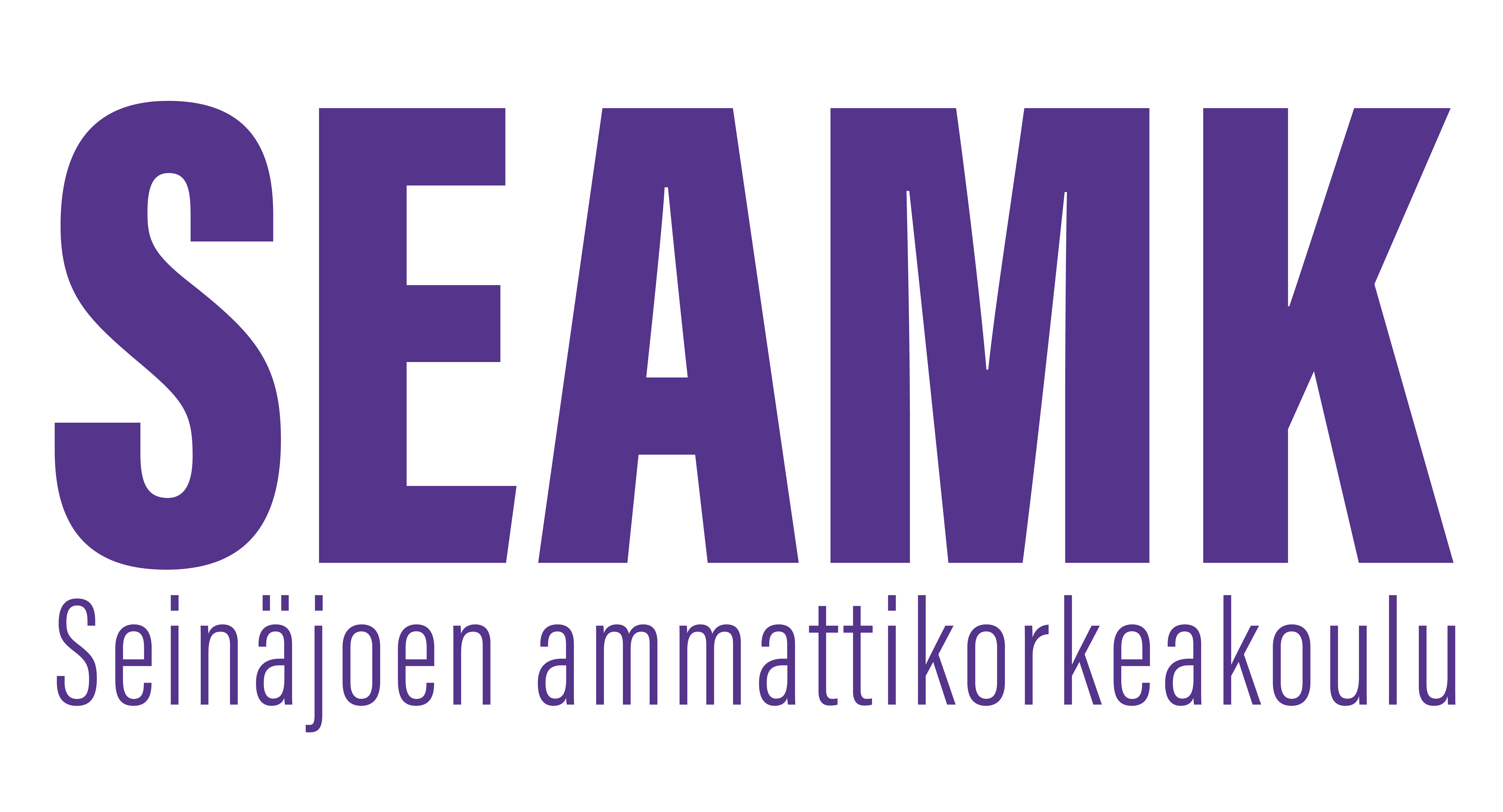Ammatilliset vuorovaikutus- ja ohjaustaidot (3op)
Toteutuksen tunnus: SH00DN06-3009
Toteutuksen perustiedot
- Ilmoittautumisaika
- 22.08.2025 - 03.09.2025
- Ilmoittautuminen toteutukselle on päättynyt.
- Ajoitus
- 01.09.2025 - 10.12.2025
- Toteutus on päättynyt.
- Opintopistemäärä
- 3 op
- Lähiosuus
- 3 op
- Toteutustapa
- Monimuoto-opetus
- Yksikkö
- SeAMK Sairaanhoitaja ja terveydenhoitaja
- Toimipiste
- SeAMK Seinäjoki, Kampustalo
- Opetuskielet
- suomi
- Koulutus
- Sairaanhoitaja (AMK)
- Terveydenhoitaja (AMK)
- Opettajat
- Tarja Knuuttila
- Tiina Koskela
- Ryhmät
-
VSH25SSairaanhoitaja (AMK), Verkkopainotteinen
- Opintojakso
- SH00DN06
Arviointiasteikko
1-5
Tavoitteet
Opiskelija
-osaa kohdata asiakkaan, perheen ja yhteisön jäsenen oman elämänsä asiantuntijana
-osaa toimia ammatillisessa ja hoidollisessa vuorovaikutuksessa eri-ikäisten asiakkaiden ja heidän läheistensä kanssa.
-osaa arvioida ja kehittää omaa toimintaansa ja vastaamaan oman toimintansa seurauksista tunnistamalla omat vuorovaikutus- ja yhteistyötaitonsa ja niiden kehittämisen
-osaa arvioida asiakkaan/ potilaan tarpeet, voimavarat sekä oman vastuun ohjauksen suunnittelussa ja omahoidossa.
-osaa suunnitella toteuttaa ja arvioida yksilö- ja ryhmäohjausta yhdessä asiakkaan/ potilaan ja muiden asiantuntijoiden kanssa.
-osaa käyttää asiakas/ potilaslähtöisiä opetus-ja ohjausmenetelmiä.
-osaa arvioida ohjauksen tuloksia yhdessä asiakkaan/ potilaan ja läheisten kanssa
-osaa tukea asiakasta/ potilasta ja läheisiä hoitoon sitoutumisessa
Sisältö
Yksilö, perhe ja yhteisö asiakkaana.
Vuorovaikutus- ja yhteistyötaidot.
Ammatillinen ja hoidollinen vuorovaikutus.
Työnjakomallit, työparityöskentely ja tiimityötaidot.
Verkostotyötaidot
Osallistuminen tunneille
_______________________
Potilaan voimavarojen arviointi, tukeminen ja asioiden ajaminen
Potilasohjauksen toteuttamisedellytykset
Tiedollinen, sosiaalinen ja emotionaalinen ohjaus
Ohjausmenetelmien potilaslähtöinen ja monipuolinen käyttö; suullinen ja kirjallinen ohjaus, demonstrointi, puhelin- ja audiovisuaalinen ohjaus, ryhmäohjaus ja yksilöohjaus
Ohjauksen vaikuttavuus, laatu ja riittävyys
Ohjaamista tukeva lainsäädäntö ja ohjauksen eettisyys
Oppimateriaalit
.
Opetusmenetelmät
Lukukauden alussa ryhmäytymispäivä, joka edellyttää läsnäoloa Kampuksella.
Arviointikriteerit, tyydyttävä (1)
1-2
Opiskelija
-tunnistaa ja pyrkii kehittämään omien vuorovaikutus- ja yhteistyötaitojensa vahvuuksia ja heikkouksia sekä pyrkii mukauttamaan toimintansa näiden mukaisesti.
-osaa toimia yksittäisissä vuorovaikutus- ja yhteistyötilanteissa ohjeiden mukaisesti.
-osaa toimia asiakaslähtöisesti.
-tietää pinnallisesti ohjauksen käsitteen, osaa nimetä joitakin ohjauksen laatuun vaikuttavia tekijöitä ja osaa pintapuolisesti soveltaa ohjausmenetelmiä.
-opiskelija on pyrkii jäsentämään aihealuetta, mutta käsittely jää suppeaksi ja pinnalliseksi suhteessa ammattialaan.
-havainnollistamisvälineitä hyödynnetään niukalti tai ne eivät tue esitystä.
-osaa tarkastella omia vahvuuksiaan ja kehittymistarpeitaan
Arviointikriteerit, hyvä (3)
3-4
Opiskelija
-osaa toimia hyvin asiakaslähtöisesti vuorovaikutus- ja yhteistyötilanteissa.
-osallistuu aktiivisesti ryhmän oppimisprosessiin ja opitun jakamiseen.
-osaa työskennellä perustellen tasa-arvoisesti ja ammatillisesti erilaisten toimijoiden kanssa.
-kehittää itseään asiakaslähtöisessä ammatillisessa osaamisessa.
-tietää ohjauksen käsitteen, ohjauksen laatuun vaikuttavat tekijät ja osaa käyttää näyttöön perustuvia ohjausmenetelmiä.
-käsittelee aihealuetta opintojakson osaamistavoitteiden suuntaisesti esittäen joitakin yhteyksiä ammattialan viitekehykseen.
-hyödyntää perustellusti lähdemateriaalia, omaa asiantuntijuuttaan ja kokemuksellista tietoa.
-myönteinen asenne ohjausta kohtaan.
Arviointikriteerit, kiitettävä (5)
5
Opiskelija
-osaa arvioida ja kehittää omien vuorovaikutus- ja yhteistyötaitojensa vahvuuksia ja heikkouksia sekä osaa mukauttaa toimintansa näiden mukaisesti.
-osaa toimia perustellen asiakaslähtöisesti vuorovaikutus- ja yhteistyötilanteissa.
-osaa toimia erilaisissa työryhmissä ja jakaa asiakaslähtöistä ammatillista osaamistaan.
-osaa ottaa vastuuta ryhmän oppimisprosessista ja opitun jakamisesta.
-kehittää itseään ja osaamistaan aktiivisesti asiakaslähtöisessä ammatillisessa osaamisessa.
-ymmärtää ohjauksen käsitteen, ohjauksen laatuun vaikuttavat tekijät ja osaa soveltaa näyttöön perustuvia ohjausmenetelmiä hoitotyön käytäntöön.
-käsittelee tietoa kriittisesti arvioiden ja rakentavasti.
-perustelee tekemänsä ratkaisut hyödyntämällä perustellusti lähdemateriaalia, omaa asiantuntijuuttaan ja kokemuksellista tietoa.
-pystyy osoittamaan itsenäistä, kriittistä ja luovaa ajattelua sekä oman alansa asiantuntijuutta.
-myönteinen asenne ohjausta kohtaan ja hän osaa antaa rakentavaa vertaispalautetta.
Arviointikriteeri, hyväksytty/hylätty
Hylätty = 0
Opiskelija
-tunnistaa omien vuorovaikutus- ja yhteistyötaitojensa vahvuuksia ja heikkouksia, mutta ei pyri kehittämään itseään ja mukauttamaan toimintaansa näiden mukaisesti.
-ei kykene toimimaan vuorovaikutus- ja yhteistyötilanteissa ammatillisesti.
-ei kykene toimimaan ohjeiden mukaisesti asiakaslähtöisessä ammatillisessa osaamisessa.
-ei tunne ohjaus käsitettä ja sen ilmenemistä hoitotyön käytännössä.
-ei tunnista ohjauksen laatuun vaikuttavia tekijöitä eikä osaa nimetä ohjauksessa käytettäviä menetelmiä.
-ei osallistu ryhmän oppimisprosessiin ja opitun jakamiseen.
-ei halua eikä osaa työskennellä tasa-arvoisesti ja ammatillisesti erilaisten toimijoiden kanssa.
Esitietovaatimukset
Ei tarvita edeltäviä opintoja.
